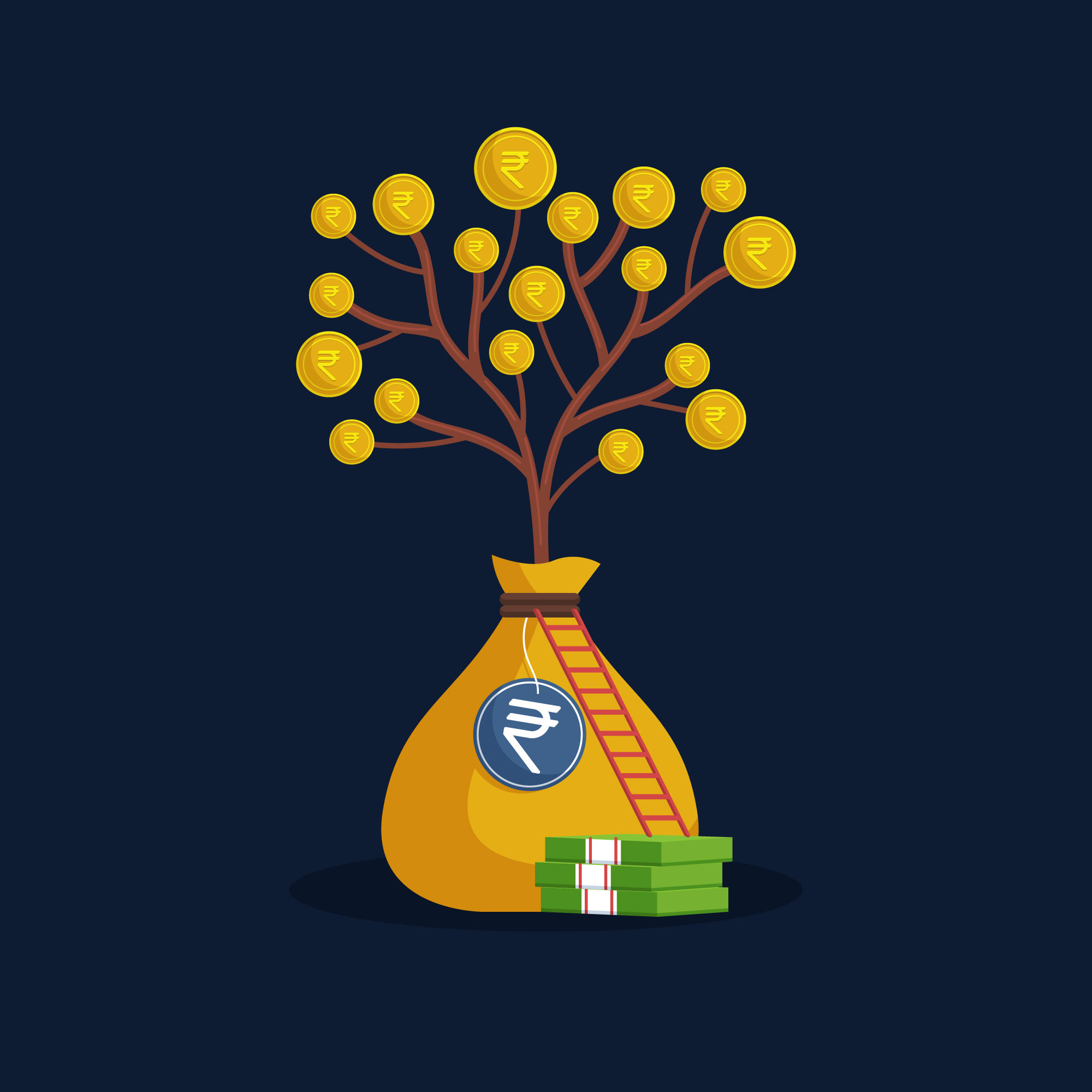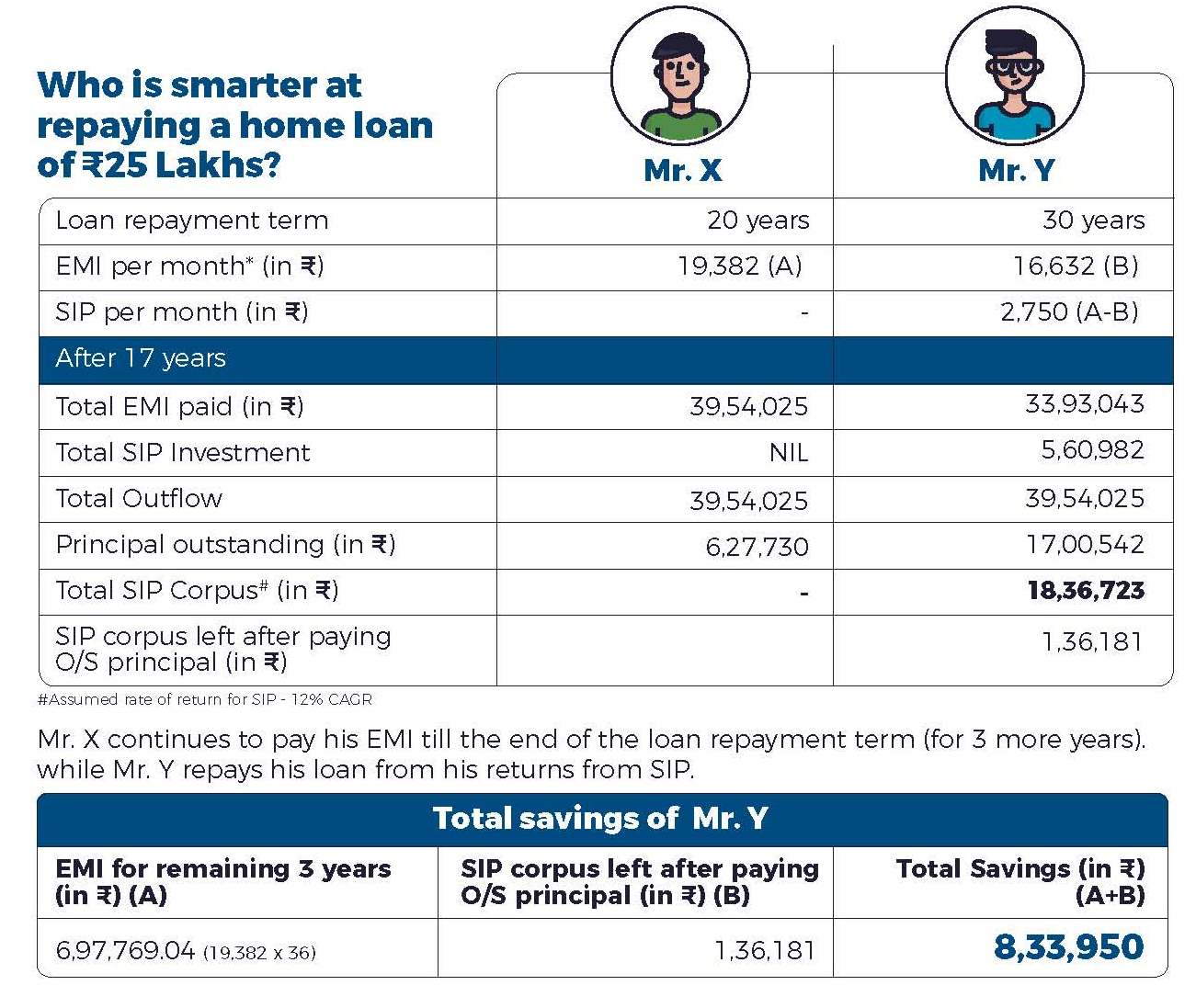- Hits: 49
The money tree
We've all heard tales of the mythical money tree—a tree that grows from sowing money and bears fruit in the form of cash. These stories often spark the imagination of children, who wonder if chocolates and candies could grow on trees too, while adults wistfully wish it were true.
The interesting part is that adults wish for such a tree, yet when given the opportunity, many are reluctant to plant the seed. The truth is, most adults are more inclined to spend rather than invest.
Let me illustrate: Imagine announcing to your family that they get to decide how to spend ₹10,00,000. Give them a date for the discussion, and you'll find everyone eagerly preparing their spending plans. Now flip the scenario—ask them to brainstorm how to save ₹10,00,000 instead. The enthusiasm will likely be replaced by reluctance and complaints. For spending, everyone has their list ready. But for saving? The focus shifts to pointing out where others could cut back.
The need for a money tree becomes even more pressing when we consider the dual challenge of increasing life expectancy and persistent high inflation. Let me share a real-life story.
I recently met a senior citizen who opted for voluntary retirement (VRS) a few years ago. He received a lump sum of ₹55,00,000, which he planned to invest at a 7–7.5% return, expecting ₹34,000 a month. At the time, his monthly expenses were around ₹20,000. Fast forward a few years, and his expenses have ballooned.  Today, he pays ₹14,000 in rent, ₹5,200 in pharmacy bills, ₹1,180 for his Jio connection, ₹2,000 for milk, and ₹5,000 for fruits and vegetables and so on—bringing his monthly basics to about ₹32,000. Recreation, vacations, and gifts for children or grandchildren are out of the question. Now, one hospitalization could push him into financial distress(one may argue having government health card but it is not sufficient to cover critical illness. The couple does not have personal health insurance as they were covered by company, insurance contract ceased post VRS and as they were suffering from BP and Diabetes they were not eligible for personal health insurance or those companies which offered insurance had exclusion clause and high premiums which was not affordable). At 66, he’s desperately seeking a desk job, but poor health, age, and lack of computer skills are barriers.
Today, he pays ₹14,000 in rent, ₹5,200 in pharmacy bills, ₹1,180 for his Jio connection, ₹2,000 for milk, and ₹5,000 for fruits and vegetables and so on—bringing his monthly basics to about ₹32,000. Recreation, vacations, and gifts for children or grandchildren are out of the question. Now, one hospitalization could push him into financial distress(one may argue having government health card but it is not sufficient to cover critical illness. The couple does not have personal health insurance as they were covered by company, insurance contract ceased post VRS and as they were suffering from BP and Diabetes they were not eligible for personal health insurance or those companies which offered insurance had exclusion clause and high premiums which was not affordable). At 66, he’s desperately seeking a desk job, but poor health, age, and lack of computer skills are barriers.
This story is a wake-up call, especially for salaried individuals without business assets that generate steady income. The reality is that we all need a money tree—a source of "income insurance." While we are familiar with life, health, and general insurance, income insurance is equally vital. In developed countries like the USA, income insurance is often an integral part of retirement planning, commonly in the form of annuity plans. A retirement plan without guaranteed annuity is incomplete.
For those who understand the importance of planting a money tree and are ready to take the first step, there is a solution. Imagine a money tree that requires nurturing for a few years (5–16 years), after which it bears tax-free income for life. Upon your passing, the principal is transferred to your nominee.
Let me explain with an example:
Mr. A, a 25-year-old who has just started earning, decides to invest in an annuity plan. He commits ₹1,00,000 annually for 11 years (ages 25–35). Starting at age 39, he begins receiving ₹1,00,000 annually for the rest of his life. Assuming he lives to 75, he will receive ₹36,00,000 over 36 years. After his passing, his nominee receives ₹10,00,000. By investing ₹11,00,000 over 11 years, his family ultimately benefits from a total return of ₹46,00,000.
The money tree can be planted by grandparents for their grand kids also, even parents can plant it for their children. If you're interested in learning more about the Money Tree and want a personalized illustration, feel free to call or WhatsApp us at +91 7990290560 or +91 9824995011. At Baxi Investment, we strictly adhere to a no-callback policy, so you can contact us without worrying about nuisance sales calls.











 called me up asking me to draw an investment plan to fund their child’s education. The parents were very alert and wanted to plan for child’s education right from when the child turned 6 months old. I presented them with an investment plan, they seemed to be happy as they had to start with very low monthly investment. Upon asking about their income, the father replied that he was the sole bread earner and child’s mother was a housewife. She had never worked before and looking at her education I thought it would be difficult for her to get a job in case of need.
called me up asking me to draw an investment plan to fund their child’s education. The parents were very alert and wanted to plan for child’s education right from when the child turned 6 months old. I presented them with an investment plan, they seemed to be happy as they had to start with very low monthly investment. Upon asking about their income, the father replied that he was the sole bread earner and child’s mother was a housewife. She had never worked before and looking at her education I thought it would be difficult for her to get a job in case of need.






